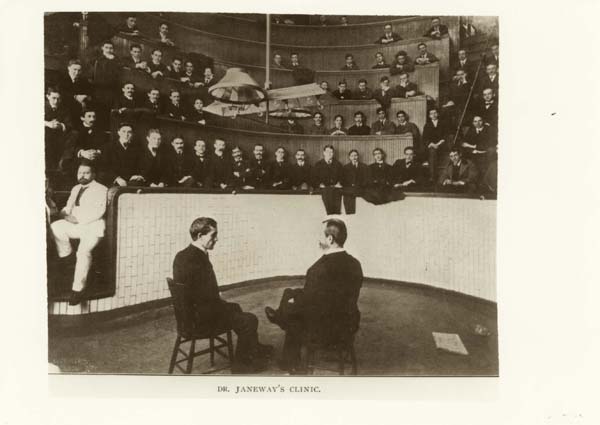
Commentary by Adi Diab MD, PGY-3
This past week on January 21th, Medical Grand Rounds was given by guest speaker Dr. John Griffin who shared his knowledge of the role of Activate Protein C in both human and murine models of sepsis and stroke.
Activated protein C (APC) is a FDA approved drug that reduces mortality in adult severe sepsis patients, but also increases the risk of serious bleeding. APC exerts anticoagulant activity by proteolysis of factors Va/VIIIa. However, additional clinical trails using other anticoagulants, antithrombin III and tissue factor pathway inhibitor, failed to show similar benefit in septic patients. These results and other data suggested that APC exerts pleotrophic effects that are independent from the anticoagulant activity. These anti-inflammatory, anti-apoptotic, and vascular endothelial permeability effects of APC are mediated via engagement of the endothelial cell protein C receptor (EPCR) and secondary activation of the G protein-coupled receptor, protease-activated receptor 1(PAR1). As noted above, Â the anticoagulant activity of APC is mediated by receptor independent proteolytic inactivation of factors Va/VIIIa.
Using both Human and Murine models, Dr Griffin shows that total deficiency in protein C can result in fatal disease and neonatal purpura fulminans. In clinical observations, the surviving infants are often blind and retarded, and they benefit from  protein C supplement for life. If partial deficiency (heterozygous Protein C deficiency) occurs, there is increased risk for venous thrombosis in adults. In-vitro studies showed that HDL provides anticoagulant cofactor activity for APC/protein S in certain clotting assays. Patients with a history of venous thrombosis or with recurrent venous thrombosis were found to have lower levels of HDL, as well as other anticoagulant cofactors such as protein S. These data along with other studies indicates that HDL deficiency is associated with venous thrombosis. This information raises the question whether lipid lowering drugs will reduce the risk of venous thrombosis.
As mentioned earlier, there are many documented benefits from the pharmacological use of APC. Not only does it increase survival in septic patients, but it also has neuroprotective activity in ischemic stroke as it reduces tPA-induced neurotoxicity and bleeding. Additionally, murine injury models show that it attenuates inflammatory lung injury and improves islet transplantation. But, because of the failure of different anticoagulants in phase 3 severe sepsis clinical trials, Griffin and others hypothesized that the APC success in sepsis cannot be explained only by anticoagulant activity. To evaluate the relative importance of the APC anticoagulant activity versus its cytoprotective actions, Dr Griffin’s lab engineered APC mutants deficient in either anticoagulant (5A-APC) or cytoprotective (E149A-APC) activities. Using these selectively altered APC mutants or genetically altered mice for in vivo animal injury studies, they were able to demonstrate that the 5A-APC mutant (that maintains the cytoprotective actions)  caused improved survival in the LPS Endotoxemia challenge whereas the mutant (E149A-APC) with only anticoagulant activity failed to protect mice  from similar lethal LPS challenge.
Several clinical studies have shown that plasma protein C is an inverse risk factor for ischemic stroke and that cerebral ischemia increases circulating APC. Based on this and other data, colleagues at the Univeristy of Rochester (Prof. B. Zlokovic’s group) studied whether APC plays any protective role in murine ischemic stroke and whether it can be beneficial when given with tPA. Using in vitro hypoxia/apoptosis assays and an in vivo murine stroke model, they were able to conclude that: 1) APC is neuroprotective via PAR1 and EPCR; 2) APC is angiogenic and neurogenic in ischemic brain; 3) APC attenuates tPA-neurotoxicity including tPA-induced bleeding & neuronal apoptosis; and 4) APC is effective in multi-dose bolusing given at 6-72 hr after ischemia onset.
Thus, APC’s mortality reduction in various injury models primarily involves cytoprotective mechanisms. Â In the future, developing APC variants with selectively reduced anticoagulant activity may improve therapy allowing increased dosing regimens with reduced bleeding risk.
